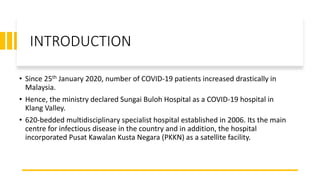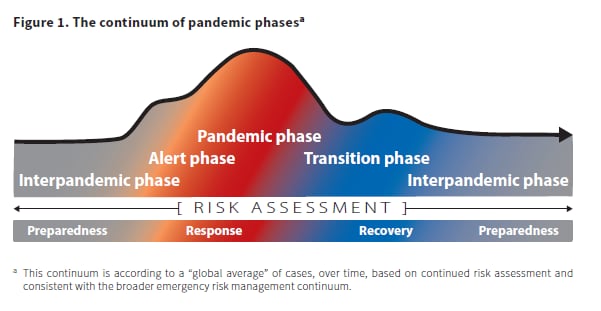Effective Pandemic Preparedness: Strategies for a Resilient Future

Anticipating the Unforeseen: The Essence of Pandemic Preparedness
In a world marked by uncertainty, the importance of pandemic preparedness cannot be overstated. This article delves into the strategies essential for creating a resilient foundation to navigate unforeseen challenges.
Learning from Past Experiences
The first pillar of effective pandemic preparedness is learning from historical outbreaks. Analyzing past pandemics equips us with valuable insights into the patterns of disease spread, enabling us to refine response strategies and allocate resources more effectively.
Strengthening Global Surveillance and Early Warning Systems
A robust surveillance system is the backbone of pandemic preparedness. Timely detection and reporting of potential threats allow for swift response measures. Collaborative global efforts in monitoring and sharing information can significantly enhance our ability to contain and manage outbreaks.
Building Healthcare Infrastructure Resilience
Preparing healthcare infrastructure for a surge in cases is critical. Adequate resources, well-trained healthcare professionals, and adaptable facilities ensure a resilient response. Investing in healthcare infrastructure is an investment in the well-being of communities during pandemics.
Implementing Effective Communication Strategies
Clear and transparent communication is key during a pandemic. Informing the public about risks, preventive measures, and the status of the situation fosters trust. Governments and health organizations must ensure that information is accessible, accurate, and consistently disseminated.
The Role of Technology in Pandemic Response
Technological advancements play a pivotal role in pandemic preparedness. From rapid diagnostic tools to data analytics for tracking and predicting outbreaks, technology empowers us to respond more efficiently. Integration of tech solutions enhances our overall preparedness and response capabilities.
Prioritizing Research and Development
Investing in research and development accelerates the creation of vaccines, treatments, and diagnostic tools. Pandemic preparedness requires continuous efforts to stay ahead of emerging threats. Collaboration between the scientific community, governments, and pharmaceutical industries is crucial for success.
Establishing International Collaboration
Pandemics transcend borders, necessitating a united global front. International collaboration in resource-sharing, knowledge exchange, and coordinated response efforts is imperative. A collective approach strengthens our ability to manage and mitigate the impact of pandemics.
Community Engagement and Empowerment
Empowering communities with knowledge and resources is a fundamental aspect of pandemic preparedness. Engaging with local communities, educating them on preventive measures, and fostering a sense of collective responsibility contribute to a more resilient society.
The Road Ahead: Pandemic Preparedness Strategies in Action
As we navigate the complexities of our global landscape, it’s crucial to actively implement and adapt pandemic preparedness strategies. Stay informed about the latest developments in pandemic preparedness strategies at Pandemic Preparedness Strategies, and let us collectively build a resilient future.
Mitigating Global Risks: Strategies for Pandemic Preparedness

Strategies for Comprehensive Global Pandemic Risk Mitigation
The complexity of global pandemics necessitates proactive and comprehensive risk mitigation strategies. In this article, we explore key approaches to mitigate the risks associated with pandemics on a global scale, fostering resilience and preparedness.
Understanding the Global Nature of Pandemic Risks
Pandemics pose unique challenges due to their global nature. This section delves into the characteristics that make pandemics different from localized crises, emphasizing the need for a coordinated and global approach to effectively mitigate the associated risks.
Early Warning Systems and Surveillance
One of the pillars of global pandemic risk mitigation is the establishment of robust early warning systems. This part of the article discusses the importance of surveillance mechanisms, data analytics, and international cooperation in detecting and responding to potential pandemic threats at an early stage.
International Collaboration and Information Sharing
Mitigating global pandemic risks requires collaboration across borders. This section explores the significance of international cooperation and information sharing among nations, organizations, and public health agencies. Shared data and insights contribute to a more effective global response.
Healthcare Infrastructure Strengthening
Strengthening healthcare infrastructure globally is pivotal for effective risk mitigation. This part of the article discusses strategies for enhancing healthcare systems, including investing in medical facilities, training healthcare professionals, and ensuring access to essential medical supplies.
Vaccine Development and Distribution Strategies
The development and distribution of vaccines play a crucial role in pandemic risk mitigation. This section explores strategies for expediting vaccine development, ensuring equitable distribution, and fostering international collaboration to address global immunization challenges.
Public Health Education and Communication
Educating the public is key to mitigating the impact of a pandemic. This part of the article discusses the importance of public health education and communication campaigns. Clear, consistent, and accessible information empowers individuals to take preventive measures and make informed decisions.
Infrastructure for Remote Work and Learning
The pandemic has highlighted the need for resilient infrastructure to support remote work and learning. This section explores strategies for developing and enhancing digital infrastructure, ensuring that individuals can continue essential activities even during a global health crisis.
Economic Resilience and Financial Preparedness
Mitigating global pandemic risks extends to economic resilience. This part of the article discusses strategies for financial preparedness, including establishing emergency funds, implementing economic stimulus measures, and fostering international collaboration to address the economic fallout of pandemics.
Social Support Systems and Community Resilience
Communities play a vital role in pandemic risk mitigation. This section explores the importance of social support systems, community engagement, and building resilience at the local level. Empowered communities contribute to a more coordinated and effective global response.
TheHealthyConsumer.com: A Hub for Global Pandemic Risk Insights
For in-depth insights into global pandemic risk mitigation, visit TheHealthyConsumer.com. The website offers articles, tips, and resources dedicated to understanding and navigating the complexities of pandemic risk on a global scale.
Looking Ahead: Building a Resilient Global Future
In conclusion, global pandemic risk mitigation requires foresight, collaboration, and a commitment to building resilience. This concluding section reflects on the importance of learning from past experiences, adapting strategies, and continuously working towards a more resilient and prepared global future.
In summary, mitigating global pandemic risks involves a multifaceted approach that encompasses early warning systems, international collaboration, healthcare strengthening, and community resilience. TheHealthyConsumer.com serves as a valuable resource for those seeking guidance on understanding and contributing to the ongoing efforts of global pandemic risk mitigation.





